5 Google Analytics Mistakes You Are Still Making In 2017
If you have an online business, Google Analytics is one of the tools you can’t live without. The tool has evolved over the years and gives you comprehensive data for monitoring user behavior.
According to SearchEngineLand, more than 28% of the world’s websites use Google Analytics.
While you might be using this tool for a long time now, it’s likely that you aren’t making the most of it.
After working with a lot of growing businesses at Marketing Masala, I have realized that most business owners/marketers make similar sort of mistakes while using Google Analytics.
Let’s analyze these mistakes and see how we can extract the most juice out of Google Analytics.
#1 Counting Internal Traffic And Goals
Most firms forget to block their own internal traffic. If you are running a website/app, there’s a huge possibility that your development and marketing team will check your platform multiple times a day (and even test the goals that you set).
This leads to miscalculated data which you cannot rely on.
The best way is to set up filters based on your IP address. An easy way to get your IP address is asking Google about it.
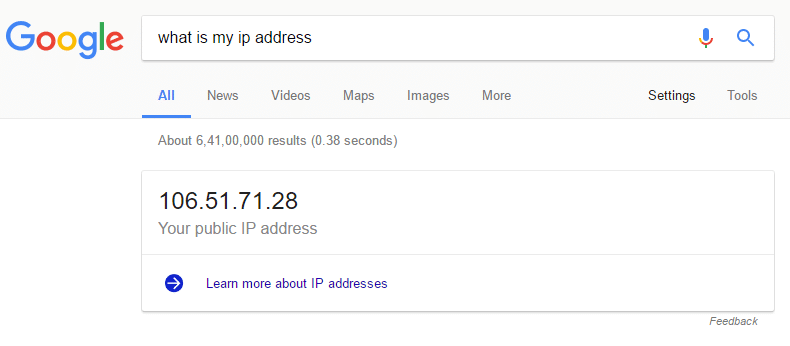
The next step is to go into Google Analytics> Admin> Filters and add a filter like this
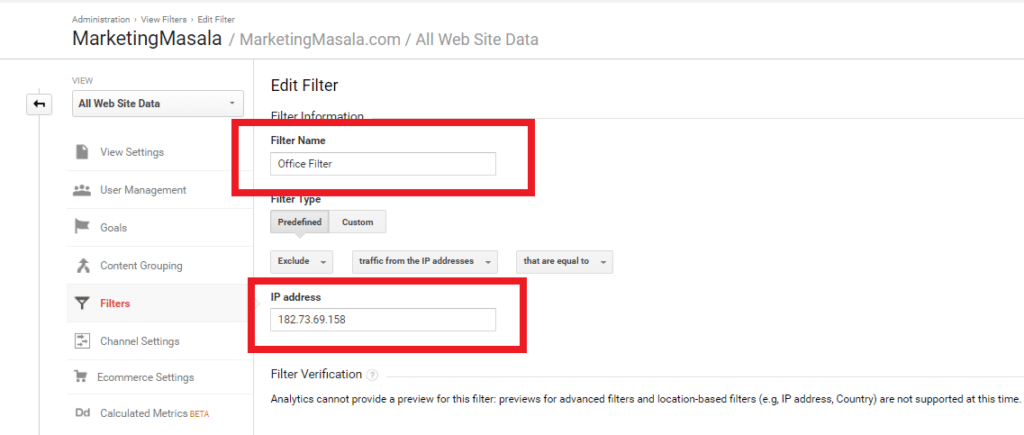
If you are a solopreneur or a freelancer, you can download a chrome extension that will block the internal traffic for you.
#2 No Funnels And Event Tracking
It’s a shame how most small businesses set up goals and forget about customer journeys. Your customers are human beings and take decisions after evaluating a lot of factors.
Before setting up a funnel, you should understand your customer’s journey in depth and map out the steps that users take before doing your desired action.
A simple example for an eCommerce company would be:
Step 1: Discovering deal
Step 2: Landing on product page
Step 3: Cart page
Step 4: Billing info
Step 5: Successful order.
Google Analytics is a powerful tool that lets you track all of this and understand where customers drop off from your funnel.
By going into the admin section, you can select goals and add funnel steps to them.
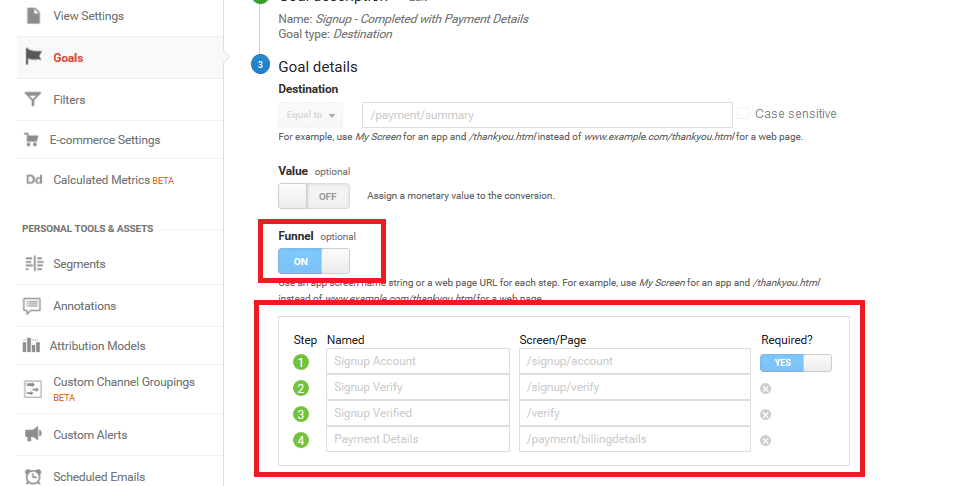
Same goes for events. Google analytics allows you to track only 20 goals. For micro goals like button clicks, video plays, file downloads, lead form fillings, etc., you should consider adding event tracking code on your buttons/CTAs.
#3 Not Using Attribution Models
Attribution models are a great way to map the different paths your customer took and which channels worked best for you.
Let’s take a case in hand:
User lands site via Facebook ads, leaves the website, searches for the website on google on the next day, lands at the product page and buys.
In this case, the first click attribution model would say that the sale happened because of Facebook ads( because that was where the first click came from)
The last click attribution model would say that organic search for the source of the sale (as that was the last click just before the sale).
In the image given below, you can clearly see that organic search drove more conversions as the first source of clicks and less conversions as the last source of clicks.
This would mean that people discover the website via organic search but convert over a series of steps from other channels (probably referrals).
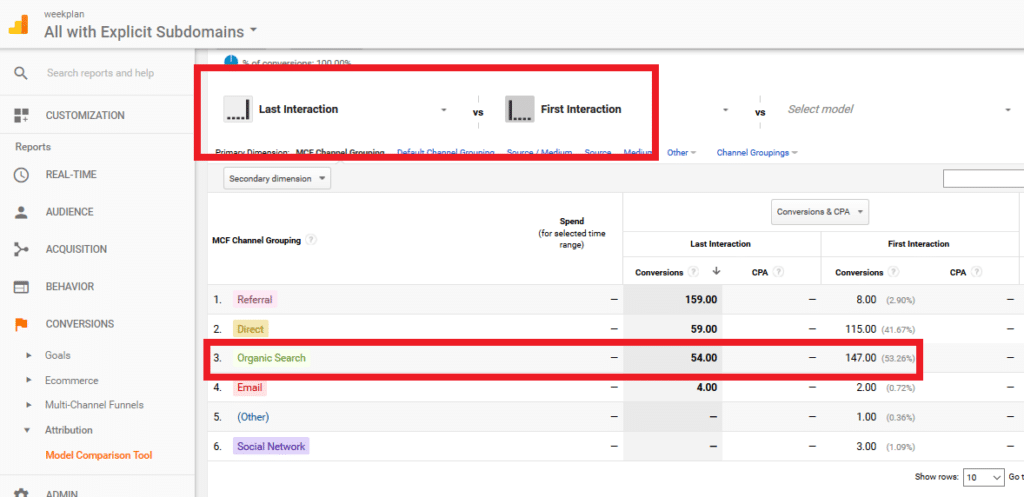
#4 Not Segmenting Your Audience
Different audiences behave in different ways. Based on where users are accessing your site from, which device they are on, what is the time of the day etc., you need to segment and optimize your product for the same.
For example, if you want to understand your overall traffic vs mobile/tablet traffic, you could do segmenting and get more insights on the same.
Here is how you can get started.
- Pull out your reports ( like goal conversions, events, source/medium)
- On the top of the graph, choose the “add segment” section
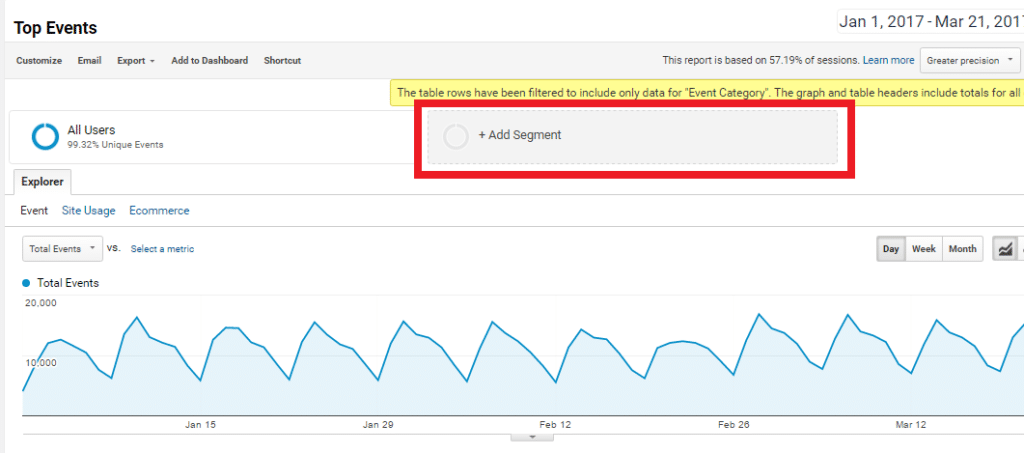
3. Here, you can find multiple options like the following:
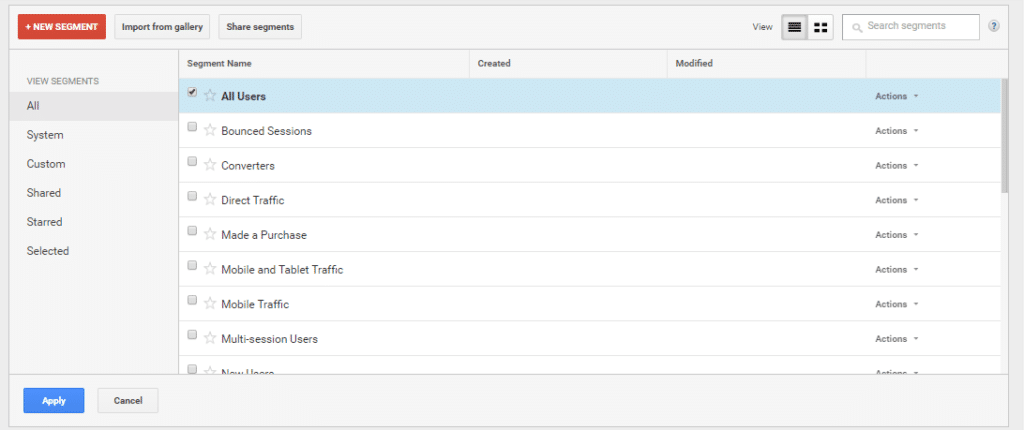
4. Now you can choose mobile/tablet traffic from the same and get going:
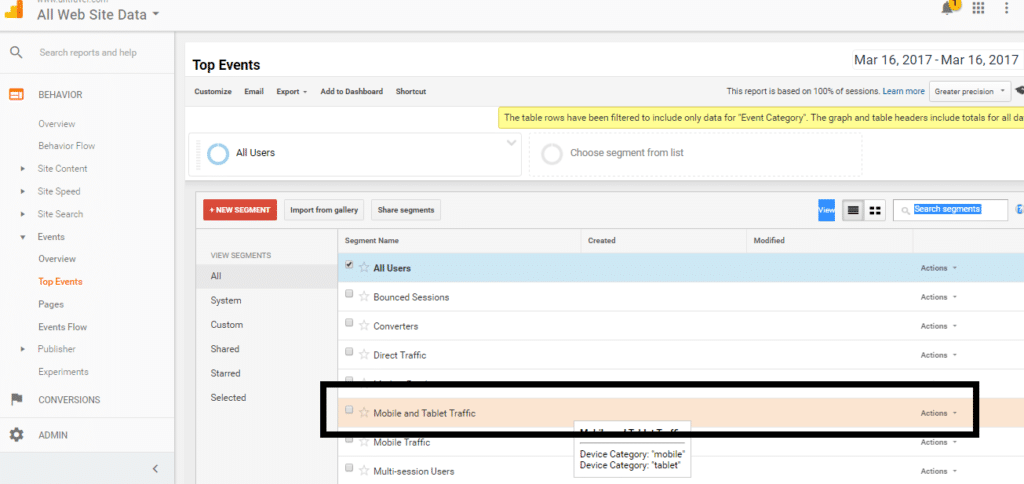
As you can see, almost 60% of the events are happening from mobile and tablet traffic.
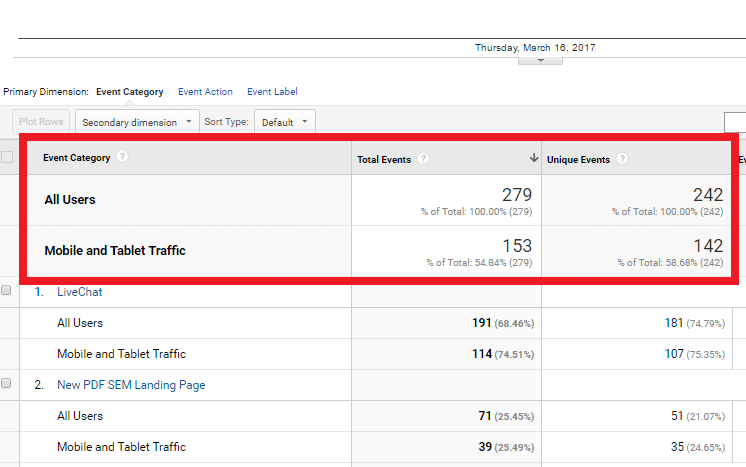
This would mean that this website needs to be perfectly optimized for mobiles and tablets in order to maximize conversions.
#5 Not Using In-Page Analytics
One of the great micro-tools by Google is the in-page analytics extension which lets you see how people are interacting with your webpages.
This can be extremely powerful for companies which are selling products online. Even for websites with a lot of content, this can be a powerful tool to see how people are engaging with your content.
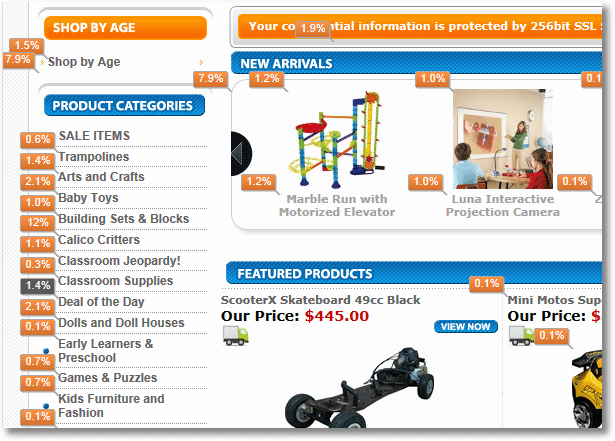 Image Source: Kaushik.net
Image Source: Kaushik.net
For example, in the above case, people are interested in new arrivals more than anything else. It would be useful to make sure that new products show up at the top.
Further, you can also draw analysis on which products received the maximum number of clicks and show them more prominently.
In a nutshell, Google Analytics comes with a series of powerful features that you might still be unaware of.
Using these features, you can monitor your data better, take data-driven decisions, understand what customers care about and improve your revenue.
Shivankit Arora
Latest posts by Shivankit Arora (see all)
- 5 Google Analytics Mistakes You Are Still Making In 2017 - March 29, 2017






One of best great tips on Google analytics. I’m so wondering that I don’t use Attribution Models thanks for providing such types of information to a newbie .
Great Thanks Now from today I’ve added other great tips for Google analytics.
I read out your blog. This blog is very useful for everyone. Thanks for sharing this informative blog. Keep it on.